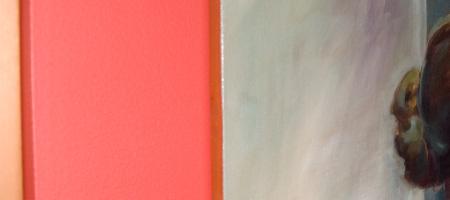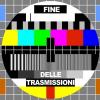Dear Ms. Espinel:
I am a visual artist (graphic artist and painter), and an attorney. I have practiced intellectual property and arts law with the law firm of Owen, Wickersham & Erickson in San Francisco for 15 years (after 3 years as a law clerk in federal court). Before I became a lawyer, I worked as a professional illustrator and graphic artist for 13 years. The focus of my law practice is visual artists, including commercial illustrators, fine artists and photographers; as well as business clients who create and exploit intellectual property. I am a member of several arts and arts lawyers organizations, and I speak and publish articles frequently on legal issues for visual artists. For example, I am a member of the AIGA, the professional organization for design and I write an online column for AIGA/SF called Legalities. I am also a member of the Graphic Artists Guild Advocacy Committee.
I am writing in response to your request for written submissions (Federal Register Vol. 75, No. 35, p. 8137). This letter is written on behalf of all visual artists, and in particular, those working in U.S. commerce, such as illustrators, graphic artists and photographers. These artists create the visuals that facilitate communications in all aspects of the U.S. economy, including illustrations, photographs and graphic design of journals and other publications, corporate identities and advertising, packaging, websites, television and interactive graphics.
Over my 15 years of practice I have encountered hundreds of intellectual property infringements. This letter describes 3 examples of infringements from 3 of my clients that illustrate how such infringements affect visual artists in the U.S. economy, and recommendations for improving the government’s intellectual property enforcement efforts.
INFRINGEMENT EXAMPLES
Client 1 – Illustrator
Online infringement by online stock image service – endangerment of illustrator’s livelihood
My client is one of the most prominent illustrators working in the design and advertising industry today. His success as an illustrator is due to the strong and distinctively graphic style that has characterized his artwork for over 30 years, including a unique way of depicting figures. Because of this unique style, his illustrations have been consistently recognized for their excellence in design industry publications and award annuals. His illustrations are regularly commissioned for major national corporations, and appear frequently on covers and pages of national publications, in print and online. Like most illustrators, my client maintains a website which displays his illustrations. The livelihood of my client, his employee, and their families, depends upon his ability to charge licensing fees for use of his illustrations in amounts that appropriately reflect the market value of his excellent work.
Because of his success, my client’s illustrations are constantly infringed. One case especially threatened to destroy the entire market for his work. An online stock image service posted a collection of 100 figurative illustrations that closely duplicated my client’s illustrations. The service allowed its customers to make unlimited use of all the images on the site (which included dozens of collections of photographs and illustrations) for an annual subscription fee of a few hundred dollars (less than the typical usage fee for even one genuine illustration by my client). Obviously, the cheap availability of these nearly identical imitations threatened to destroy the market value for my client’s genuine illustrations, and thus, his entire livelihood.
We were able to get the infringing collection of illustrations removed through a take-down notice to the site’s host, pursuant to the Digital Millennium Copyright Act (17 U.S.C. § 512) (“DMCA”). It took a lawsuit, however, to learn how the infringements were generated. The stock service had digitally copied several of my client’s illustrations from an online publication, and sent them to an illustrator in Indonesia, who proceeded to digitally trace the illustrations and create the 100 variations, for $5 a piece, in a few weeks. The remedies available to my client under U.S. copyright law were persuasive in getting the stock service to agree to a permanent injunction and damages. Because my client had obtained copyright registrations for his illustrations before this infringement happened, he was entitled to statutory damages and attorneys’ fees (17 U.S.C. § 412). The prospect of being liable for significant awards of statutory damages (up to $150,000 per infringed work for willful infringement) as well as my client’s attorneys’ fees motivated this infringer to settle.
Client 2 – Graphic Artist
Unauthorized use of images and reputation to induce infringement – endangerment of graphic artist’s livelihood
My client is one of the most recognized and best loved graphic artists working in the design and advertising industry today. His distinctive, iconic images have become well-known in connection with his work for many prominent clients, for whom he has created famous logos and corporate identities. Throughout his 30+ year career to date, his graphic artwork has been consistently recognized for excellence in design industry award annuals. His artwork has been exhibited and collected by museums and galleries worldwide, including a portrait in the National Portrait Gallery in Washington, D.C.. He is a frequent lecturer at universities and design organizations across the country. His work appears in print and online publications of his clients, as well as his own website. The livelihood of my client, his employees, and their families, depends on his ability to charge fees for his graphic art services in amounts that appropriately reflect the market value of his high-quality work.
Because of his success, this client’s work is also frequently infringed. In one particularly egregious example, an ad agency digitally copied entire pages of my client’s website and incorporated those pages, as well as numerous copies of his graphic artworks, into a proposal to one of the agency’s potential clients. The agency pitched the proposal by touting my client’s graphic work and representing (falsely) that he was a partner in the pitch. After winning the account, the agency then contacted my client for a bid on the job. Later he was told that another artist would be hired to create the final artwork, imitating my client’s work, for a much lower fee. Obviously, if such practices went unchecked, my client would consistently lose assignments to infringing imitators, and his livelihood would be threatened.
We were able to stop the threatened infringement by explaining to the agency that it had infringed my clients’ copyrights (as well as his trade dress rights and publicity rights) by digitally copying and using his works, name and reputation in the proposal without his permission, and the agency was about to induce further infringement by hiring someone else to copy it. The remedies of U.S. copyright law, including in particular the availability of enhanced statutory damages for willful infringement and attorneys’ fees, were helpful in persuading the agency to abandon its plan.
Client 3 – Photographer
Unauthorized posting and sharing of photographs online – endangerment of photographer’s livelihood
My client is a photo journalist. Some of her photographs of an historic figure originally appeared in a press release with a copyright notice in her name. Later, she discovered these photographs posted on a public television station’s website, without attribution to her or any other identifying information. The television station’s site posts an explicit blanket permission to its visitors to publish and distribute all photographs on the site for noncommercial purposes, without requiring credit to the station (or, obviously, the unidentified photographers). It is quite likely that the photographs have been copied and used by visitors to the site, and now exist in multiple places, in print and online, without any information that would allow viewers to trace the photographs back to the television station’s website or the original photographer.
We were able to get the photographs removed from the television station’s website. However, there was no way to track how often they may have been copied and reused by visitors to that site while they had been posted. My client permanently lost control over where and how these photographs would be used.
As with other working visual artists, working photographers earn their income based on their copyrights in their photographs. The exclusive rights under copyright gives artists the right to determine what compensation will be due for usage, and to control whether or not an image may be used. Many clients who buy or license the rights to visual works require exclusivity, that is, that other entities will not be given simultaneous rights to use the same image. Exclusive rights carry the highest license fees. If, as in this case, an image is taken and used by others, the photographer can no longer license the work on an exclusive basis. Through no fault of her own, the market for those images has been greatly devalued. Obviously, if this happens on a wide scale, her entire body of work, and thus her entire livelihood, could be put at risk.
ENFORCEMENT ISSUES and RECOMMENDATIONS
The 3 examples above are not unique. As images become increasingly accessible online, the same scenarios are happening with increasing frequency to visual artists, including illustrators, graphic artists, and photographers, across the country. According to one study, 90% of all images found online are unauthorized.
These infringing practices threaten the livelihood of over 221,000 working artists (60% self-employed in 2008) and over 152,000 working photographers (over 50% self-employed in 2008). According to the Economic Census of 2007, the category of Graphic Design Services alone generated over $8 billion in revenues for that year, based on over 16,000 businesses which employed over 57,000 people.
1. Preserve DMCA notice and take-down procedures; work for similar procedures abroad
As the example infringements above demonstrate, the internet creates increasingly easy opportunities to infringe intellectual property rights in works of the visual arts. Images posted online can be digitally copied, reproduced and redistributed online in a very short time.
The notice and take-down provisions of the DMCA are an important and essential tool in effectively stopping such infringements. Without the DMCA, online infringers would be able to reap substantial profits, destroy the livelihoods of visual artists, and then disappear, long before traditional court-ordered remedies could be implemented.
However, the reach of the DMCA is limited to website hosts in the United States. Increasingly, U.S. visual artists are experiencing online theft and duplication of their work on websites hosted in other countries. For example, like Client 1, other illustrators and photographers have seen their entire online portfolios taken and reproduced for sale on stock image sites. But unlike Client 1, when the stock site is hosted overseas, it is extremely difficult, and usually cost-prohibitive, to stop such thefts.
On behalf of all visual artists, I urge the Government to encourage international cooperation to stop such online infringements, perhaps with similar notice and take-down procedures. This could be accomplished through WIPO, ICANN, or a similar international organization, which would set the procedures for the notice and take-down process, and swift arbitration in cases of disputed online copyright infringements, similar to ICANN’s universal domain name dispute policy and the approved dispute resolution services which arbitrate domain name disputes worldwide.
2. Expand the availability of statutory damages and attorneys’ fees for copyright infringements
As noted in the examples regarding Clients 1 and 2 above, the availability of enhanced statutory damages for willful infringement, and attorneys’ fees, is an important incentive to infringers to stop their infringing behavior (17 U.S.C. § 504). In my experience, when an infringer knows that the claimant cannot recover these remedies, particularly attorneys’ fees, the infringer is likely to ignore cease and desist demands. Infringers are betting, often correctly, that the copyright owner cannot afford to sue to enforce his rights.
However, under current U.S. copyright law, these remedies are available only to copyright owners who obtained U.S. copyright registrations for their works before the infringement happened (17 U.S.C. § 412). Unfortunately, most copyright owners, both in the U.S. and foreign countries, are not aware of this obscure provision of U.S. copyright law. Indeed most U.S. copyright owners, especially individual artists, are not even aware that registering one’s copyright is a prerequisite to bringing a lawsuit against an infringer in the U.S. (17 U.S.C. § 411).
These provisions of U.S. copyright law are outdated and out of sync with international law. No other country requires registration before filing suit. Indeed, in compliance with the Berne Convention for the Protection of Artistic and Literary Works, even foreign authors can sue in the U.S. without a registration (17 U.S.C. § 411(a)), and no other country conditions significant remedies on having obtained a registration before the infringement occurred. As I understand it, Sections 411 and 412 of the Copyright Act are meant to encourage early registration to ensure that the Library of Congress would receive the deposit copies for its collections. However, in practice, their most significant effect is to disproportionately disfavor individual copyright owners, making it uniquely more difficult for them to enforce their rights in this country.
On behalf of visual artists, I ask the Government to support amendments to U.S. copyright law making statutory damages and attorneys’ fees are available to all copyright owners for enforcing their rights against infringers, regardless of when they obtained a U.S. copyright registration.
3. Ensure that statutory damages are available for each work infringed, regardless of group registration
Statutory damages are awardable according to the number of works that have been infringed. For example, if two illustrations were copied, the copyright owner is entitled to two awards of statutory damages (ranging from $750 to $150,000 per work for willful infringement) (17 U.S.C. § 504). For the purposes of assessing statutory damages, the Copyright Act says that collective works and compilations, that is, works that are made up of several separate elements (such as encyclopedias) count as one work (17 U.S.C.§ 504( c)).
Copyright law and regulations allow the Copyright Office to register groups of related works (see 17 U.S.C. § 408©(1); 37 CFR § 202.3(b)(3)(i)). The Copyright Office sets registration forms and procedures for the convenience of the office and copyright owners. Currently, the Office allows group registrations of unpublished works, joint registration of works that have been published together, and, for photographs only, group registrations for published works that were not published together (see generally). Thus, under current group registration options, not all works registered together are compilations or collective works as these terms are defined for the purposes of Section 504( c).
Unfortunately, some courts have mistakenly held that any group registration counts as only one work (citing Section 504( c)), and therefore the plaintiff is entitled to only one statutory damages award, even when numerous works have been infringed. Other courts hold that several independently viable works may be published together and/or registered together without jeopardizing their status as individual works. These courts recognize that works which have “an independent economic value” should count as separate works for the purposes of statutory damages, regardless of how they were registered. (Compare, e.g., Coogan v. Avenet Inc., 2005 WL 2789311 (D.Az. 2005) (holding several photographs registered as an unpublished collection count as a single work) with Playboy Enterprises, Inc. v. Sanfilippo, 46 USPQ2d 1350 (S.D.Cal. 1998) (each photograph counts as a separate work regardless of their publication together in the same magazine)).
On behalf of visual artists, I ask the Government to support an amendment to U.S. copyright law clarifying that statutory damages are to be awarded based on the number of separately infringed works with independent economic value, rather than based on the number of registrations. In addition, the Copyright Office should be directed to provide the opportunity for group registrations of illustrations and other visual works, regardless of their respective publication dates, on the same basis as now offered only for photographs.
4. Ensure that copyright owners may file infringement claims once they have submitted their application for copyright registration
Under the Copyright Act, a copyright owner cannot bring an infringement lawsuit until “registration of the copyright claim has been made”(17 U.S.C. § 411(a)). For many years, there has been a split among circuit courts, and even among courts within the same circuit, over what qualifies as “registration” under this section. Some courts permit infringement claims to go forward so long as the copyright owner has submitted an application to the Copyright Office; other courts will dismiss the action unless the registration certificate has been issued; and some circuits have not announced a rule. (Compare, e.g., Apple Barrel Prod., Inc. v. Beard, 730 F.2d 384 (5th Cir. 1984) (application sufficient) with City Merchandise Inc. v. Kings Overseas Corp., 64 USPQ2d 1061 (S.D.N.Y. 2001) (certificate required)).
In a recent seminar, the U.S. Copyright Office admitted that its huge backlog of applications continues to grow, and is resulting in unprecedented delays. Applications filed online currently take 9 months to process. Applications filed on paper can take up to 22 months to process. Expedited processing is available, but only for an exorbitant $760 additional fee. The Copyright Office has a temporary policy of allowing expedited processing without the fee, but only if the application has already been pending in the office for at least six months. (The 2010 Copyright Office Comes to California, Feb. 3, 2010, San Francisco.)
On behalf of visual artists, I ask the Government to support amendment of Section 411(a) to clarify that copyright owners may file suit as soon as they submit their copyright application. This will solve the split in the courts, and ensure that copyright owners will not be inequitably disadvantaged by processing delays within the Copyright Office over which they have no control.
5. Ensure that any new orphan works legislation protects the copyrights of visual artists
Under current law, copyrights can last up to 70 years after the death of the artist. “Orphan works” as the term is understood in the trade means works that may still be protected by copyright, but which have been abandoned by their copyright owners, or for which no copyright owner remains in existence. Many entities, such as libraries, digital archivists, museums and documentary film makers, want to be able to duplicate older works they believe may be orphan works, without risking that a copyright owner will suddenly appear and render them liable for infringement.
A few orphan works bills have been introduced in past sessions of Congress. All of them define “orphan work” as any work for which a user cannot find the copyright owner. There are no other criteria to ensure that the work was actually orphaned. If the user undertakes a reasonable search, but does not find the copyright owner, then he can go ahead and copy the work. Later, if the copyright owner discovers the infringement, she would be entitled to recover only a minimal license fee, and in many cases would not be able to stop ongoing use of her work.
This scheme immediately creates a kind of catch-22 for copyright owners of visual works. Most visual works, whether created 50 years ago or last month, are likely to be deemed orphans. This is because:
(1) Under long-standing industry practice, visual works, such as illustrations and photographs, are frequently published without identifying information such as the artist’s name, copyright owner information, or a title of the work. As Client 3’s experience illustrates, even where a work was originally published with such information, it can be separated upon subsequent publications or uses in different media. Visual artists do not have control over this practice, and certainly cannot retroactively change the way in which their images have already been published. For example, my Clients 1 and 2 entire career’s worth of images have been published largely without identifying information. Moreover, infringing unauthorized publications will not include proper credit.
(2) It is particularly hard to search for such information about a visual work, unless you already have some searchable text, such as the title of the work, the copyright owner, or the name of the artist. Even if new technologies make it possible to mark and search digital images going forward, that will not retroactively make it possible to search older images.
If the only criteria for an orphan work is that the copyright owner can’t be identified through a reasonable search, the livelihood of all visual artists will be at risk. All visual works can be legitimately published, or illegitimately copied, without identifying information. As soon as that happens, a reasonable search will not find the copyright owner. Then those images can be copied, and, under such orphan works protection, the visual artists will have no recourse. This is especially true for artists like Clients 1 and 2, whose careers have already spanned several decades, and whose works have been published without embedded identifying information.
Even if an image is protected by U.S. copyright registration, this type of orphan works protection would prevent the artist from recovering statutory damages or attorneys’ fees, and in some cases will not even allow the artist to recover any damages, or stop the infringement. As discussed above, the threat of statutory damages and attorneys’ fees is extremely important in policing infringement and preserving the livelihood of working visual artists.
Under U.S. law and the Berne Convention, all authors, including visual artists, are entitled to copyright protection regardless of whether their works are published with copyright notices or other identifying information. Prior orphan works bills would have reversed that protection for visual artists. By essentially deeming as orphan works most visual works that have already been published without accreditation, and then drastically limiting remedies for their unauthorized use, the bills would have created an incentive for infringing visual works.
Any new orphan works legislation should be carefully written to preserve the rights of visual artists. The threshold requirement for defining an orphan work should not be merely that a copyright owner cannot be found. The law should require a reasonable good faith belief that the work has actually been abandoned, based on objective criteria. Sample criteria for believing a work has been abandoned can include (1) the work is of the type most likely to be abandoned, e.g., old or unpublished; (2) the work was found under circumstances suggesting it was abandoned, e.g., in an unclaimed estate, or in an old out-of-print book; (3) other evidence discovered during the search suggests abandonment, e.g., the original author was identified but her successors cannot be found, or the publisher is out of business with no known successors. Unless such good faith criteria are met, the copyright owner should be entitled to exercise all of the statutory remedies for infringement.
Moreover, any new orphan works legislation should require users of an allegedly orphan work to make a payment to an escrow account, rather than allowing users to exploit the works for free. This will eliminate the incentive for bad faith infringement, and ensure that copyright owners will have immediate access to compensation for the unauthorized use.
Thank you for your consideration of the above.
Respectfully yours,
Linda Joy Kattwinkel
















